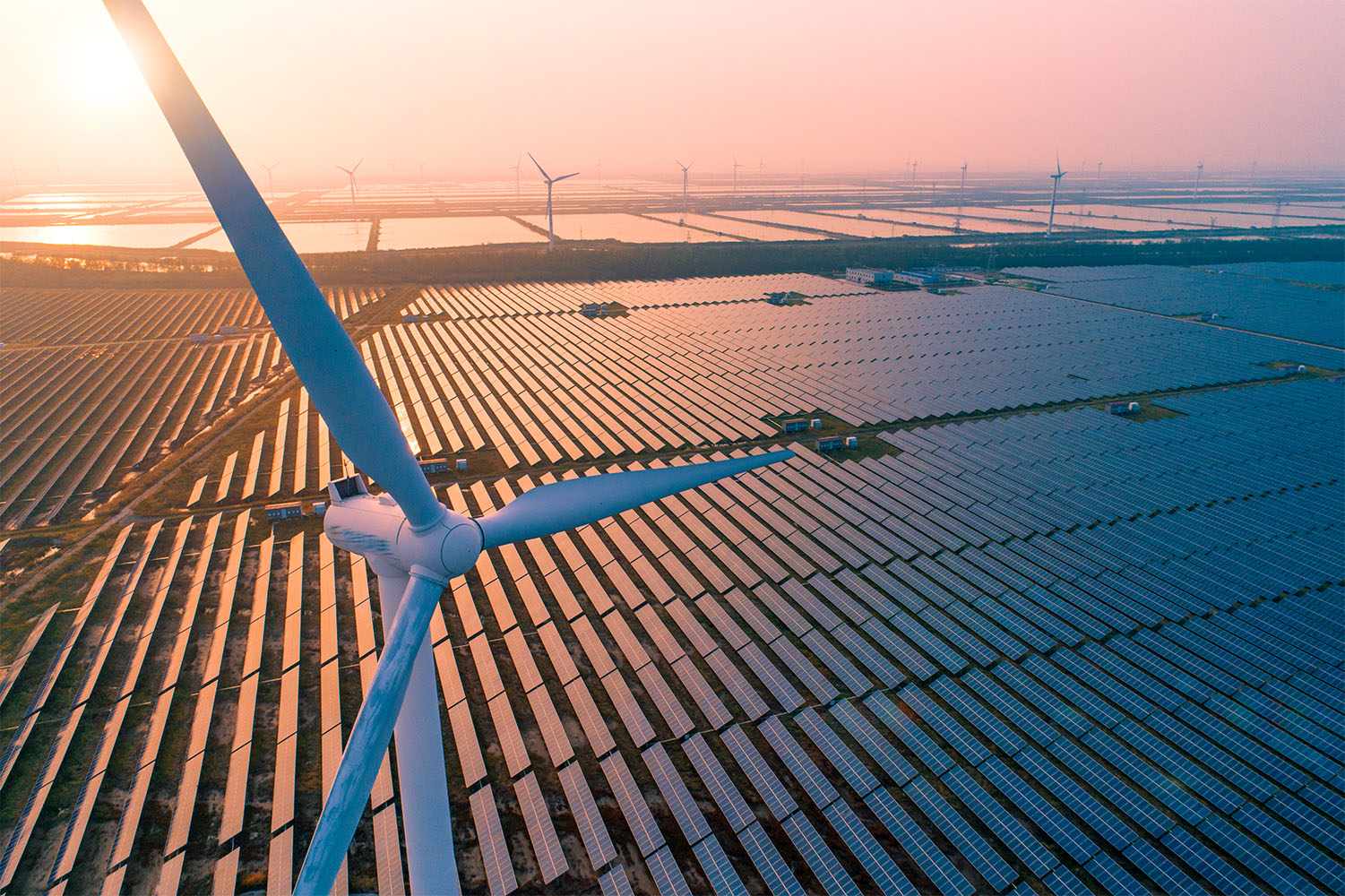EU's new RED III legislation significantly raises renewable energy targets for 2030
Published on 12th December 2023
RED III has provisions for industry, transport, building and permits and must be transposed to national law by mid-2025

The European Union's new Renewable Energy Directive (RED), known as RED III, which amends the existing directive only a few years after the previous changes, entered into force on 20 November 2023 with Member States required to implement the law over the next 18 months.
Ahead of this implementation period into national law by 21 May 2025, the provisions relating to environmental permitting procedures must be implemented by 1 July 2024.
Renewable quota increases
One of the main objectives of RED III is to increase the share of renewables in the overall energy production in the European Union. Taking into account the carbon neutrality objective by 2050 and the resulting intermediary targets from the European Green Deal and the "Fit for 55" package, RED III increase the EU-wide renewable energy target from 32% to a minimum of 42.5% by 2030 – and even to an indicative target of 45% by the same date.
To achieve this target, environmental permitting procedures have to be streamlined and sped up and sub-targets imposed on the industry, transport and buildings sector.
RED III also contains provisions that can be linked to environment, social and governance (ESG) goals. Notably, RED III stipulates that guarantees of origin shall only be valid for transactions for 12 months after the production of the relevant energy unit. These guarantees of origin are not only useful for companies when concluding corporate PPAs and for consumers to avoid greenwashing, but are also necessary evidence in the context of sustainability reporting under the Corporate Sustainability Reporting Directive – in particular, article 32(j) and article 45(d) of the Sustainability Reporting Standards.
Fast-track permitting
To perpetuate and accelerate the rollout of renewable energy projects, the provisions regarding environmental permitting procedures of the previous directive, RED II, are expanded and deepened. Notably, the three measures that were already provided for in the Council Emergency Regulation (EU) 2022/2577 of 22 December 2022 are resumed and further elaborated in RED III.
As such, RED III provides for:
- Mapping and designation of acceleration zones. Member States are to draw up a map of areas with a significant potential for the deployment of renewable energy on their territory and to identify, within these areas of particular potential, "renewable acceleration areas" for one or more types of energy sources (that is, areas considered particularly suitable for hosting projects involving one or more renewable energy sources).
- Accelerated permitting procedures. Member States are to shorten and simplify the environmental permitting procedures for renewable energy (production) infrastructures (in particular, by shortening deadlines, making contact points available to permit applicants and introducing simple dispute resolution procedures).
- Overriding public interest. By 21 February 2024, until climate neutrality is achieved, a presumption of "overriding public interest" for renewable energy installations and their related infrastructure is introduced. This presumption applies in particular in the case of permitting requests for projects with an impact on a Natura 2000 protected biodiversity area.
The goal of these new provisions is to shorten the length and reduce the complexity of administrative procedures to grant permits for renewable energy infrastructure, since this is one of the main obstacles to investment.
These provisions will have to be implemented further into national law. For example, the Belgian legislation, by the act of 11 July 2023 and royal decree of 21 July 2023, has, already amended the procedural rules of the highest administrative court, the Council of State, to shorten procedures relating to the energy transition or to renewable energy projects.
Industry targets
In the industrial sector, Red III requires an increase in renewable energy usage of at least 1.6 percentage points as an annual average calculated for the periods 2021 to 2025 and 2026 to 2030. The policies and measures adopted to achieve this annual increase are to be integrated in the national energy and climate plans of Member States. Those policies and measures must also the renewable-based electrification of industrial processes, if this is cost-effective.
Member States may count waste heat and cold from efficient district heating and cooling up to a limit of 0.4 percentage points, provided that more than one building or site is involved.
Member States must ensure that at least 42% of hydrogen used for energy and non-energy purposes in the industry comes from renewable fuels of non-biological origin by 2030, and 60% by 2035. Member States can reduce the contribution of those renewable fuels in industrial use by 20%, if they are on track meeting their overall renewable energy target, and if the share of hydrogen from fossil fuels is no higher than 23% in 2030 and 20% in 2035.
Transport targets
For the transport sector, Member States must choose between a binding share of at least 29% renewables in the final energy consumption in the transport sector by 2030; or a binding target to reduce greenhouse gas intensity in transport by 14.5% by 2030.
The new rules also set a combined binding secondary target of at least 1% in 2025 and 5.5% in 2030 for advanced biofuels and biogas and for renewable fuels of non-biological origin in the share of renewable energy supplied to the transport sector. Within this 2030 target, there is a minimum requirement of 1% for renewable fuels of non-biological origin.
By 21 November 2024, a Union database will also be set up to enable the tracing of liquid and gaseous renewable fuels and recycled carbon fuels.
Buildings targets
For the building sector, the new rules set an indicative target of at least 49% share of renewable energy in buildings by 2030.
Member States may count waste heat and cold towards this share, up to a limit of 20 % of that share, but if they decide to do so, the indicative national share shall increase by half of the percentage of waste heat and cold counted towards that share.
Renewable targets for heating and cooling systems will gradually increase, with a binding increase of 0.8 percentage points per year at the national level until 2026 and 1.1 percentage points from 2026 to 2030.
Osborne Clarke comment
Red III is a significant step for the EU as it looks to move towards achieving a more sustainable future with an increase in the contribution of renewables to the European energy mix.
This will require project developers and investors across Europe to start to prepare to adapt to this new reality, as individual Member States look to implement RED III into national law by May 2025. Provisions for environmental permitting procedures will be required sooner by 1 July next year.
Despite the challenge of keeping pace with and preparing for implementation, the faster permitting procedures will lead to more legal certainty for project developers and investors. This will be welcome as the EU moves towards fulfilling its ambitious 42.5% quota of energy from renewables, up sizeably from the previous 32%, of the overall EU energy mix by 2030.





